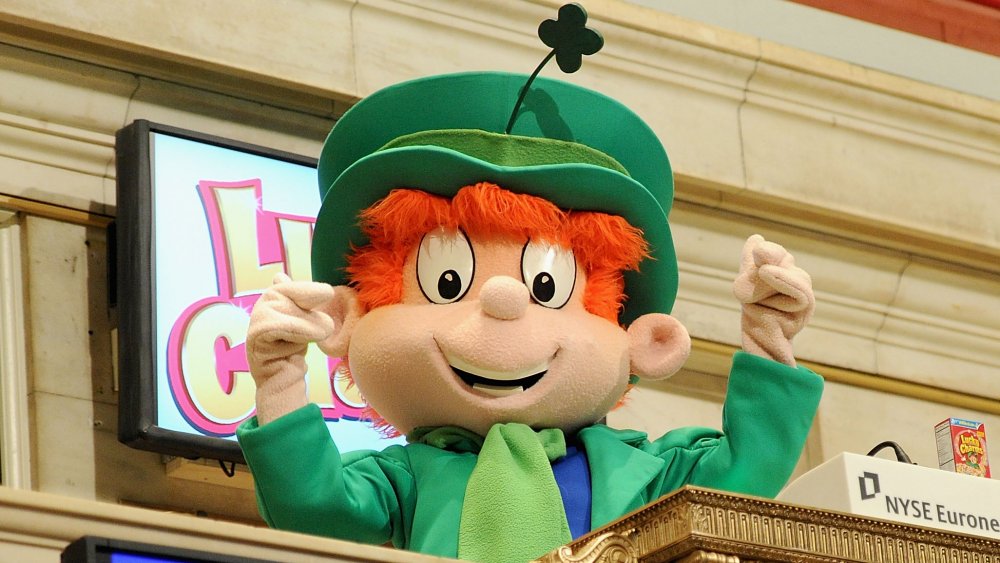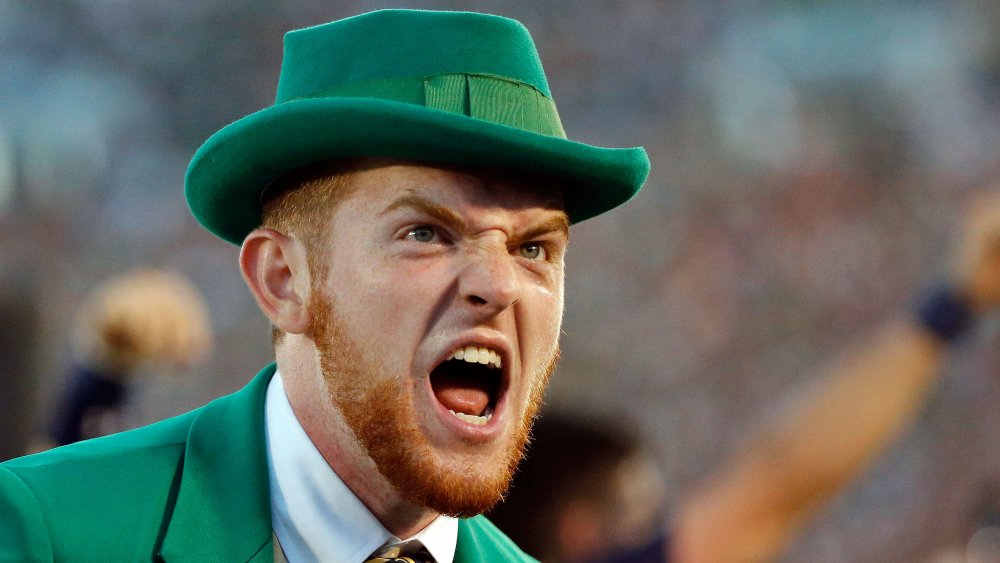The Legend Of Leprechauns Explained
Leprechauns. They're pretty much the last game in town as far as socially acceptable racial stereotypes go. They've battled wits with Porky Pig, hornswoggled their way up the ranks of professional wrestling, and paid for at least one vacation for Warwick Davis.
But beyond vague images of pots of gold, wishes, and the general understanding that Colin Farrell is just three of them in a skin suit, what do we really know about leprechauns? Can the myth be sifted from the pop culture cloud? After all this time, can we finally separate the heritage from the cartoonish cliches, allowing this corner of colloquial folklore the dignity it deserves? And, more importantly, can we uncover the secret of their unparalleled success in keeping those kids away from their Lucky Charms?
According to Irish Central, the first recorded mention of a leprechaun came in an 8th century saga about the King of Ulster: his majesty fell asleep on a beach, only to have a bevy of tiny men try to drag him into the sea, the scamps. The King captured the little folks and exchanged their freedom for three wishes, which is a little more on-brand than an attempted drowning, at least.
You've been served a pot o' lies
Like most legendary beasties, leprechauns as we know them today come to us courtesy of a generations-long game of cultural telephone. Starting with their name, Britannica tells us that "leprechaun" comes from the old Irish luchorpan, or "little body," an on-the-nose moniker if ever there was one. Legends paint them in various shades of mischievousness — sometimes they'd show up and fix a person's shoes. Sometimes they'd steal a baby and replace it with a shapeshifter. They were a mixed bag. Interestingly, they traditionally wore red instead of green which, if nothing else, would've made them easier to spot against Ireland's verdant rolling hills, assuming you weren't rocking some deuteranopia.
Then along came the 20th century, and a new wave of leprechaun appreciation. Thanks to a couple of turn of the century books like 1912's The Crock of Gold and the 1903 story of Darby O'Gill, Ireland's fairy folk got a second chance at life, albeit one requiring a more verdant set of clothes and, eventually, the memorization of the names of all those marshmallow shapes.
It's important to note that leprechauns have become an outlet for Irish stereotypes, which is, we can all agree, just plain wrong. If anything, that sort of negativity should be attached to the Clurichaun, the legendary cousin of the leprechaun differentiated solely by its crippling alcoholism.

